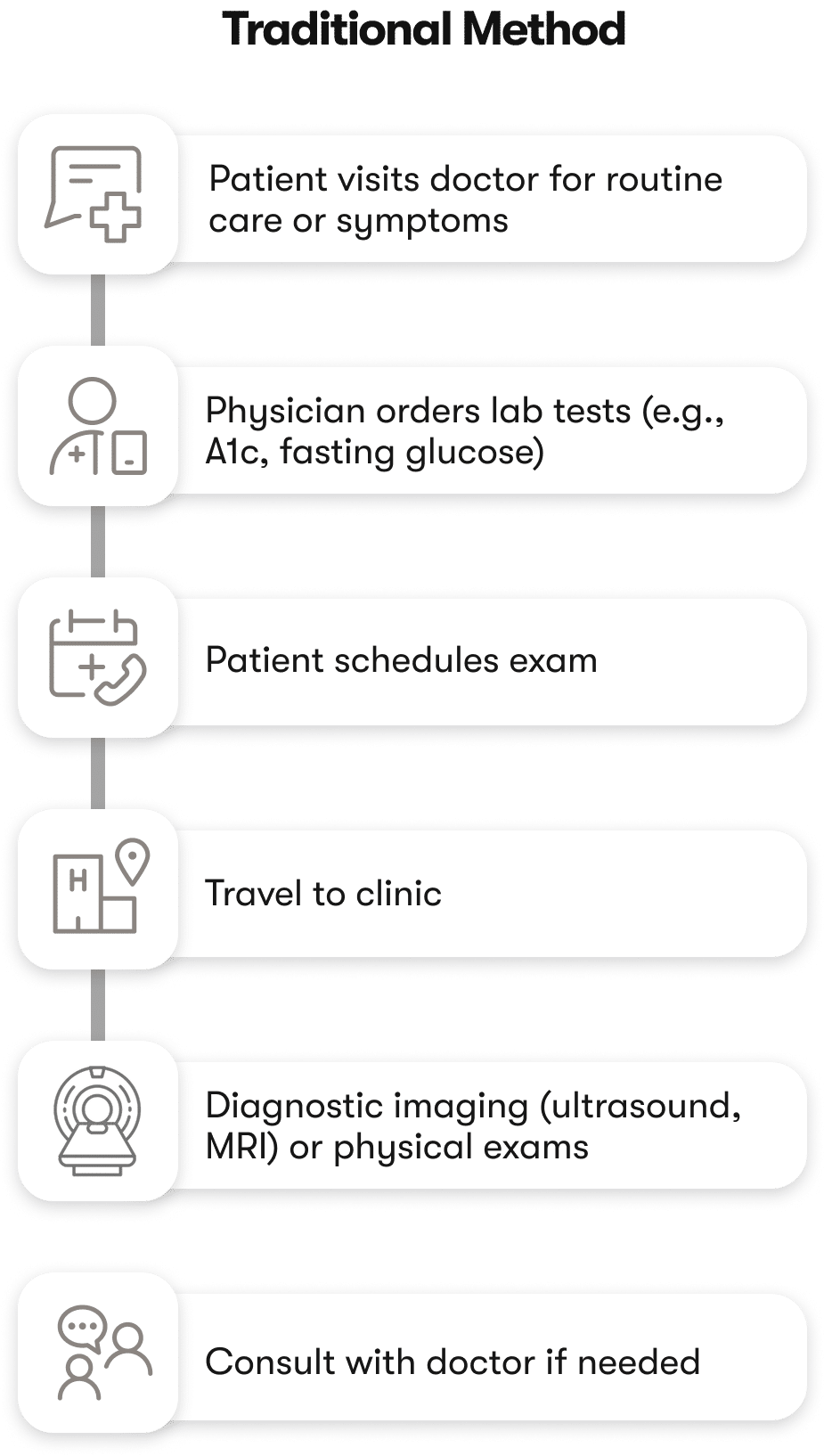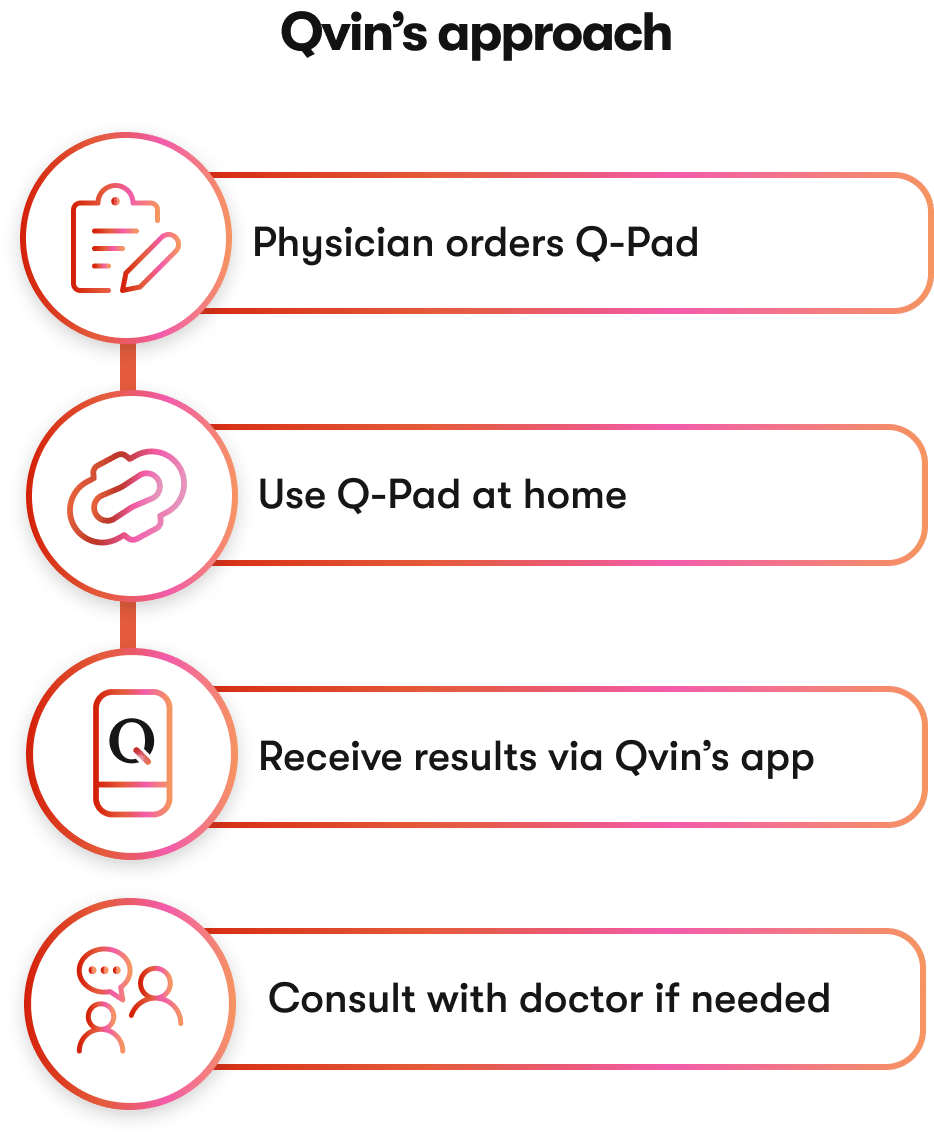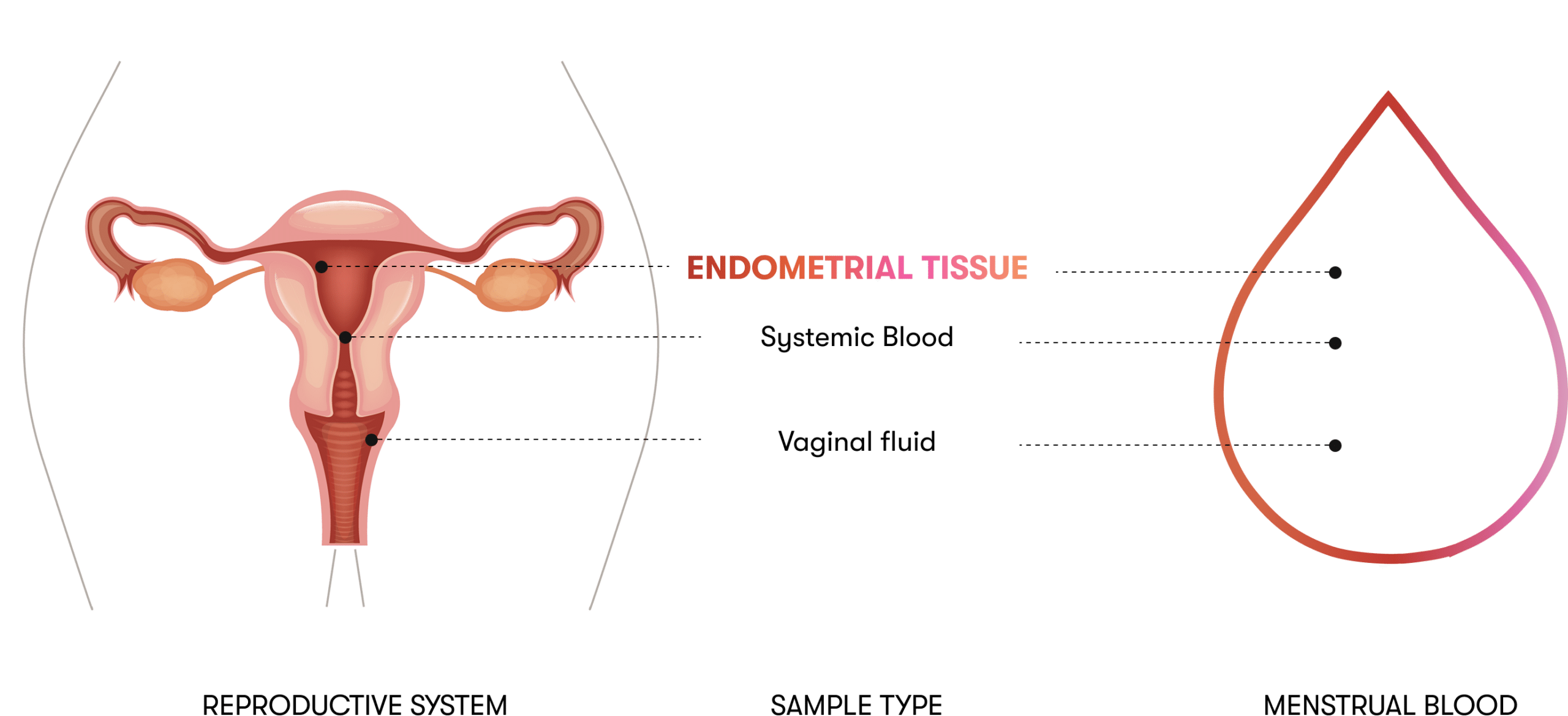DIAGNOSING CONDITIONS
Understanding
Uterine Fibroids
Uterine fibroids are non-cancerous growths that develop in or on the uterus, often going undiagnosed despite their prevalence. Early detection and consistent monitoring are essential to managing the condition and preventing long-term health issues.

HOW THE CURRENT SYSTEM IS FAILING WOMEN
Detection Is Crucial for Uterine Fibroid Treatment
Uterine fibroids are often overlooked or undiagnosed until symptoms become severe, leading to complications like chronic pain, anemia, and fertility issues. Delayed diagnosis can significantly impact quality of life and limit treatment options.
Menstrual blood may provide a more accessible and innovative approach to earlier uterine fibroid detection.
Uterine Fibroids by the Numbers
Women experience fibroid-related symptoms or health concerns in the US.
Women affected by 50 years of age.
Average delay before women seek treatment for uterine fibroids.
Qvin Simplifies
Uterine Fibroid Screening


Partner with Qvin
THE PROBLEM
Approximately $41.4 billion was the economic
burden of uterine fibroids in the U.S. alone in 2022.
THE SOLUTION
Qvin makes blood work accessible, increasing
early detection, reducing costs, and saving lives.

Rationale for the Q-Pad for Uterine Fibroids
The Q-Pad, Qvin’s self-administered menstrual blood (MB) collection platform, offers a clinically compelling solution for non-invasive detection of uterine fibroids by capturing immune and endometrial biomarkers directly from menstrual effluent. Scientific evidence supports that MB reflects fibroid-related changes in cytokine and angiogenic profiles, including elevated VEGF-A, IL-6, G-CSF, and reduced IL-2 levels in affected individuals [1][2]. These immune shifts align with mechanistic findings from transcriptomic studies showing that fibroids disrupt endometrial gene networks involved in inflammation, angiogenesis, and adhesion—processes that are measurable in MB [3]. Further, endometrial flushing studies have demonstrated altered levels of PGF2α, glycodelin, αVβ3 integrin, and TNF-α in fibroid patients, highlighting the feasibility of detecting disease-specific molecular signatures using uterine-derived fluids [4][5]. The Q-Pad enables high-fidelity sample capture suitable for multiplex analysis, combining diagnostic accuracy with user convenience. This positions it as a scalable tool for population-level fibroid screening and research applications.
References
[1] Differences in Menstrual Cytokine Profiles of Women with and without Uterine Fibroids, Dhanani Z et al., F&S Science, 2023.
[2] Endometrial Flushing Tumor Necrosis Factor Alpha and Interleukin 2 Levels in Women with Polycystic Ovary Syndrome, Leiomyoma and Endometrioma: Comparison with Healthy Controls, Demir M et al., Geburtshilfe und Frauenheilkunde, 2019.
[3] Understanding the Impact of Uterine Fibroids on Human Endometrium Function, Navarro A et al., Frontiers in Cell and Developmental Biology, 2021.
[4] Endometrial flushing αVβ3 integrin, glycodelin and PGF2α levels for evaluating endometrial receptivity in women with polycystic ovary syndrome, myoma uteri and endometrioma, Demir M et al., Gynecological Endocrinology, 2017.
[5] Reduced levels of VEGF-A and MMP-2 and MMP-9 activity and increased TNF-alpha in menstrual endometrium and effluent in women with menorrhagia, Malik S et al., Human Reproduction, 2006.
JOIN US
Uterine Fibroids management
improves health outcomes.
Be a part of the solution and transform uterine fibroids care.
Funding
If you represent a diagnostic platform, healthcare organization, or country-level agency and would like to work with us, please fill out this form and we will get back to you.
Research
If you are a scientist, foundation, or non-profit interested in collaborating on studies or supporting our innovation, please fill out the form and we will get back to you.
